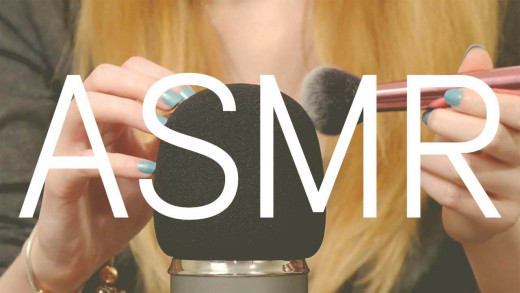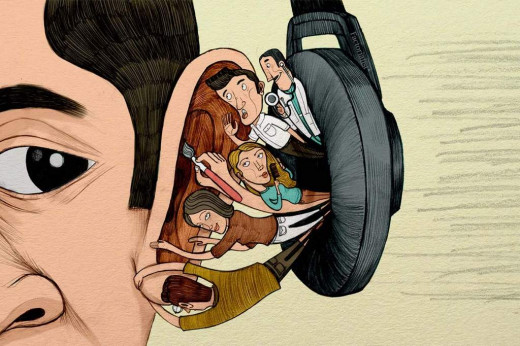Asmr: A New Type of White Noise

Autonomous Sensory Meridian Response: The Quiet Cultural Phenomenon
While I’m sitting on a bar stool at the kitchen counter, fingers hurriedly clacking out the words you are now reading, I am also listening to someone on YouTube unwrap and eat a nefarious amount of calorically inundated, crunchy food. See, I experience an almost ridiculous amount of anxiety when doing, well, just about anything. My ability to concentrate, therefore, is right-out shoddy, so I listen to a person munch on greasy goodness. The correlation here? It relaxes me, and when more chill, I’m able to pen a line or two sans intrusive thoughts.
I know that for some -okay, maybe for many- watching a stranger tap on a plastic container filled with spicy ranch or pour a fizzy drink over ice is anything except appealing; most would probably be annoyed. Yet, I am not a unicorn concerning the stimulus and my corresponding reaction. While many jive to the artistic stylings of a YouTuber masticating a crisp, spicy chicken sandwich, other individuals may respond to the sound of a page turning, hair being brushed, or whispering. Others may find their zen through nothing more than a person speaking calmly and directly to the camera, perhaps roleplaying an everyday scenario, or just waving a flashlight languidly in a dark room.
While the triggers may vary, the sensation viewers experience, generally involving relaxation and overall stress reduction, is termed Autonomous Sensory Meridian Response. Hintings of this phenomenon began to appear on the internet around 2007, but it wasn’t until 2010 when Jennifer Allen, a manager at a cybersecurity company, distinctly defined the phenomena as ASMR.

The Limited Science Behind ASMR
Arguments abound on the scientific validity of said phenomena, attributing the viewer’s perceived response -usually a relaxing tingle stemming from the top of the head and traveling down the spine- as imagined sensations or the younger generations’ answer to chronic isolation and loneliness. The dearth in research on ASMR does little to convince critics otherwise. What the few studies on the subject have revealed is that a substantial portion of ASMR viewers indicate that the sensory-triggered videos provide them with a way to relax, consequently diminishing mental health symptoms like stress, insomnia, and negative emotions.
In a 2018 study, researchers recorded that those who self-identified as experiencing ASMR had reduced heart rates and amplified skin conductance while watching sensory-stimulating videos. The group that identified as non-ASMR showed no such physiological response. A further study conducted at Dartmouth College utilized MRI to monitor the responses of individuals who experience ASMR as they watched triggering videos. Results revealed the stimulation of a portion of the prefrontal cortex associated with things such as self-awareness and particular social behaviors, like grooming. Additional portions of the brain responsible for reward and emotional arousal were also sparked.
Hearing is Believing: Your Intro to ASMR
So sure, ASMR may not presently have the support of the scientific community, which is tenuous, at best, but that does not negate its heavy, steadily growing online following, spearheaded by a myriad of YouTubers.
Below, I have included some of the most popular ASMR videos (note the insane amount of views for these clips) spanning various categories for your viewing pleasure, or displeasure.
The rabbit hole for this topic is deep, so happy falling.









